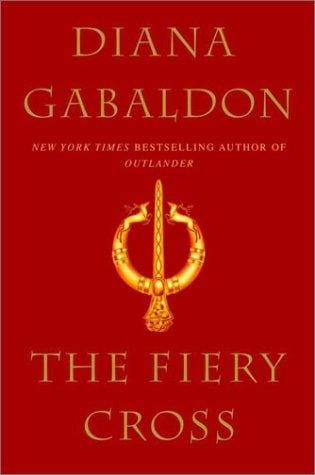The Fiery Cross: Outlander’s Epic Fifth Chapter
Discover how Diana Gabaldon’s The Fiery Cross propels the Outlander saga through revolution, loyalty, and richly detailed history in this in-depth guide.

Introduction
Few historical fantasy series have captured readers’ imaginations like Diana Gabaldon’s Outlander saga. The fifth installment, The Fiery Cross, fans the flames of passion, revolution, and family loyalty against the backdrop of pre–Revolutionary North Carolina. This 800-word guide explores why the novel is essential reading, touching on its sweeping plot, layered themes, and meticulously researched history while remaining largely spoiler-light for newcomers.
Plot Overview of The Fiery Cross
A Gathering at Mount Helicon
The story opens in 1770 with Scottish immigrants and colonial settlers converging for the grand Highland Gathering. Jamie Fraser’s goal is ostensibly communal celebration, yet beneath the music and whisky he quietly rallies support for the Crown in order to protect his land and people. Readers quickly sense the tension: Jamie knows a bloody revolution is coming, thanks to his time-traveling wife, Claire.
The Brewing Revolution
Throughout the novel, Gabaldon masterfully tightens the noose of impending war. Jamie must navigate a treacherous line of loyalty to the British governor while secretly preparing for the colonies’ break. The titular “fiery cross,” a charred symbol carried through the Highlands to summon clans to battle, becomes a potent metaphor for the call to arms echoing through Fraser’s Ridge.
Major Themes
Family and Loyalty
At its core, The Fiery Cross is a meditation on the bonds that tie families together. Jamie, Claire, their daughter Brianna, and son-in-law Roger wrestle with protecting one another while safeguarding the wider community. Loyalty stretches beyond bloodlines to encompass tenants, servants, and local Tuscarora allies, illustrating Gabaldon’s expansive definition of kinship.
Duty Versus Desire
Jamie’s duty to crown and colony clashes with his desire to keep Fraser’s Ridge neutral. Claire’s duty to heal conflicts with her wish to avoid changing history. Meanwhile, Roger struggles with his ministerial calling versus the practical skills demanded for frontier survival. These internal battles heighten suspense and add realistic complexity.
Faith, Fire, and Symbolism
The fiery cross itself symbolizes both purification and destruction. Characters pray for guidance while fearing divine wrath; fires cleanse surgical tools yet threaten wooden cabins. By weaving Christian, Celtic, and Native American imagery, Gabaldon emphasizes the cultural melting pot at the heart of colonial America.
Character Development
Jamie Fraser: Leader and Laird
In previous books, Jamie transformed from hunted Jacobite to homesteading patriarch. Here he claims a new mantle: military strategist. His charisma draws farmers and frontiersmen into his orbit, but readers also witness his vulnerabilities—lingering back pain, fear of betrayal, and gnawing uncertainty about which path will spare his family.
Claire Fraser: Healer Between Times
Claire’s twentieth-century medical knowledge saves lives, yet using it publicly risks accusations of witchcraft. Gabaldon devotes entire chapters to makeshift surgeries, herbal remedies, and failed inoculations, underscoring Claire’s ingenuity and moral dilemmas. Her moments of quiet reflection—missing running water and penicillin—ground the series’ time-travel premise in poignant reality.
The Younger Generation
Brianna and Roger, now parents, grapple with forging identities in a century not their own. Brianna’s engineering skills help build a waterwheel; Roger’s musical talents cement community bonds despite a devastating injury that threatens his voice. Their marriage, tested by trauma from book four, evolves into a partnership emblematic of modern values transplanted into the past.
Historical Accuracy and Research
Gabaldon’s trademark attention to detail shines. From Gaelic oaths to Cherokee trade routes, every page brims with verifiable facts. The author consulted colonial militia records, period medical texts, and North Carolina land grants to recreate daily life. This authenticity enriches the reading experience and provides educators with a fictional gateway to discuss early American history.
Why The Fiery Cross Matters in the Series Arc
Some readers view the novel’s deliberate pacing as a departure from the battle-heavy Drums of Autumn. Yet its 979 pages serve a crucial narrative purpose: assembling allies, sowing secrets, and lining up dominoes for the Revolutionary War that erupts in later volumes. By exploring mundane tasks—harvesting crops, christening infants, convening local courts—Gabaldon reminds us that history is lived in kitchens and churches long before it erupts on battlefields.
Tips for New Readers
If you’re contemplating starting with The Fiery Cross, resist the temptation. While Gabaldon offers contextual breadcrumbs, emotional payoffs depend on prior knowledge of character backstories. Begin at Outlander, then savor each successive tome. Audio editions, narrated by the acclaimed Davina Porter, provide an immersive alternative for readers short on time. Finally, keep a Gaelic pronunciation guide handy; it will transform tongue-twisters into melodic phrases.
Conclusion
The Fiery Cross stands as a pivotal bridge between personal homestead drama and large-scale revolution. Through sizzling symbolism, multilayered characters, and scrupulous research, Diana Gabaldon delivers a tale that warms the heart while warning of the fires of war. Whether you’re rereading in anticipation of the Starz adaptation or discovering the Highlands for the first time, this fifth chapter proves that when the cross burns, every soul must choose where to stand.



